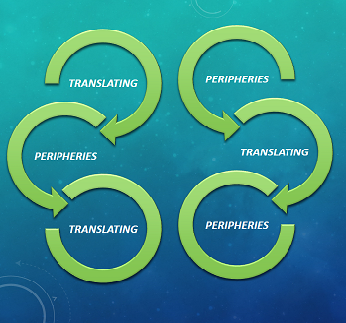The Tango in Translation: Intertextuality, Filmic Representation, and Performing Argentine Tango in the United States
DOI:
https://doi.org/10.21992/T9W34WKeywords:
Tango, Film, Dance, Translation, Gender and Sexuality, United States, EthnographyAbstract
This article analyzes representations of the Argentine tango by the U.S. media utilizing Farzaneh Farahzad’s theory of “translation as intertextual practice” and Lawrence Venuti’s theory of translated “adaptations.” I argue that the juxtaposition of Latin American and European cultural stereotypes within filmic representations of the tango has created and reinforced a highly racialized master discourse (Said Faiq) that continues to influence how the Argentine tango is perceived in the United States today. Because cultural translation occurs between a hegemonic culture and a marginalized culture, representations of the tango in the United States both create and reinforce a master discourse that inextricably ties the tango to an exoticized and eroticized Latin “Other.” I conclude by discuss how the racialized and sexualized narratives discussed throughout this paper are integrated into contemporary performance of the tango. I draw on ethnographic research with tango communities throughout the United States to illustrate how 20th century filmic representations of the tango continue to motivate, influence, and inform how, when, and why the Argentine tango is performed by U.S. dancers and musicians. Films analyzed include Four Horsemen of the Apocalypse, Some Like it Hot, Last Tango in Paris, and The Scent of a Woman, as well as a variety of lesser-known films and television advertisements. Although a large variety of 20th century films feature the tango, the films discussed in this paper were selected for analysis due to the frequency with which they are referenced by tango aficionados and contemporary tango dancers, musicians, and deejays performing throughout the United States today.Downloads
Downloads
Published
Issue
Section
License
Authors who publish with this journal agree to the following terms: a.Authors retain copyright and grant the journal right of first publication with the work simultaneously licensed under a Creative Commons Attribution License that allows others to share the work with an acknowledgement of the work's authorship and initial publication in this journal. b.Authors are able to enter into separate, additional contractual arrangements for the non-exclusive distribution of the journal's published version of the work (e.g., post it to an institutional repository or publish it in a book), with an acknowledgement of its initial publication in this journal. c.Authors are permitted and encouraged to post their work online (e.g., in institutional repositories or on their website) prior to and during the submission process, as it can lead to productive exchanges, as well as earlier and greater citation of published work (See The Effect of Open Access).



